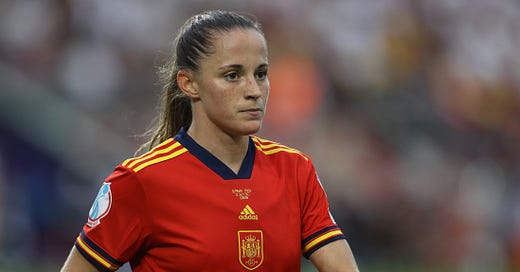Ona Batlle, told by those who know her best...
The Spain right-back has become of the best in the world. Five of her earliest coaches from back in her homeland give an insight into her rapid rise...
Ona Batlle stood out to Pau Almar when she was just 10 years old. Almar was the coach of one of Vilassar de Mar’s youth teams, a town just a few miles east of Barcelona, and the birthplace of Batlle and her brother Joan.
With a population of just over 20,000 people, this quaint town on the Mediterranean coastline hasn’t housed many top players over the years, but is just down the road from one of the ultimate bearers of world class talent.
Batlle though was always on the path to stardom, and it’s now over a decade since Almar began coaching the new Barcelona and Spain full-back, and he remembers how she stood out from day one.
“During the first training session she was with us, we had a match between 22 boys,” he recalls. “Ona was there training with us, but we had to select eleven. The first two balls Ona touched impressed me and she was the first name on the list.
“Instantly, I saw that she had something special and different from the others.”
Batlle would only spend a couple of years with her hometown club before inevitably Barcelona got wind of her talent and that she was just a few miles down the coast.
She had also stood out for the local Catalonia national youth teams, so it was no surprise to Almar when the giants of European football came calling to get Batlle into their youth programme at La Masia.
“Barcelona noticed Ona when she began to play games with Vilassar in the women’s team,” he says. “It was at the end of the season and she played with the men’s team and the women’s team at the same time. They called her to train and after two sessions they already saw her level and signed her.
“Ona stood out above everyone defensively. She was a very fast player and very hard to beat in a one vs one. She was physically very small at the time, but very strong in the challenge and was never afraid of what made her win the most duels against physically larger children. We soon saw that she had a lot of potential to be very good, since she made a big difference to the team.”
“We signed a very young player, but someone we projected had a great future…”
As expected, Batlle was nowhere near the end product at her age, and Almar recalls the main point of focus in his coaching of her was her “decision-making with the ball”, as they looked to enhance the attacking side of her game which is so proficient to this day.
“She was very good technically, but sometimes she made bad decisions. In two seasons, her evolution was spectacular. She was a very smart player with a great desire to learn and that allowed her to improve a lot in those aspects where at the time it was most difficult for her.”
Batlle would go on to spend the next five years in Barcelona’s youth teams, before being called into the first team squad on several occasions during the 2016-17 season, but didn’t make a senior first team appearance.
At the end of the season, Barcelona started to heavily invest in the first team, leading to several young players to search for first team football elsewhere. Batlle was one of them.
She swapped Barcelona for the country’s capital – Madrid. Specifically, Madrid CFF, a team with a track record of developing young players who then head off elsewhere, often to bigger clubs both in Spain and beyond.
Check out over 100 more unique stories in WFC’s Premium section, available for just £45 for 12 months, paid in one go, or a £6 a month rolling subscription.
All subscriptions come with a 7-day free trial to allow you to explore our full archive.
Plus, guarantee you everything that is to come over the next 12 months…
“We signed a very young player, but someone we projected had a great future,” says Jesús Nuñez, head coach of Madrid CFF at the time. “For us, it was a risky bet since we were making our debut in the first division and it being Ona’s debut in the league too, but we were not wrong in our projections.
“From the beginning, she already stood out for her way of working and her desire to improve. She spared no effort.”
Having only just 18 that summer, Batlle made 28 appearances in the league, playing a majority of Madrid CFF’s games and helping them to a more than respectable 10th in the league come the end of the campaign.
Keep reading with a 7-day free trial
Subscribe to Women's Football Chronicles to keep reading this post and get 7 days of free access to the full post archives.



